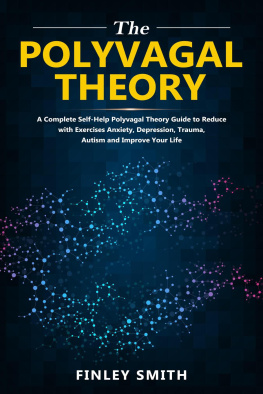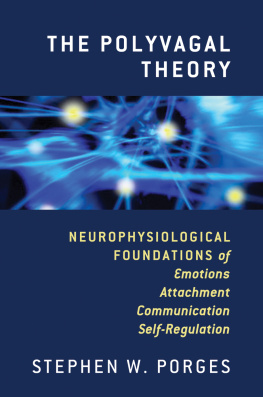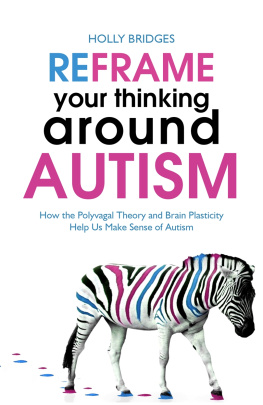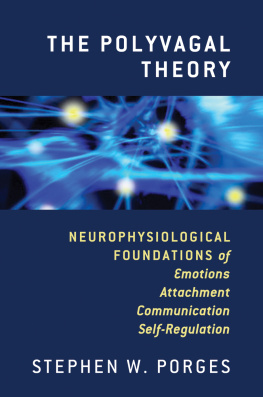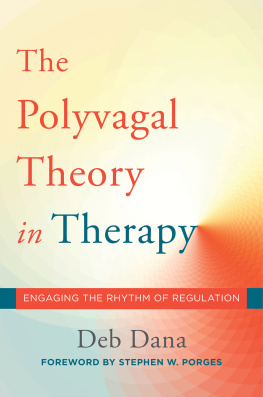Contents
Guide
Page List
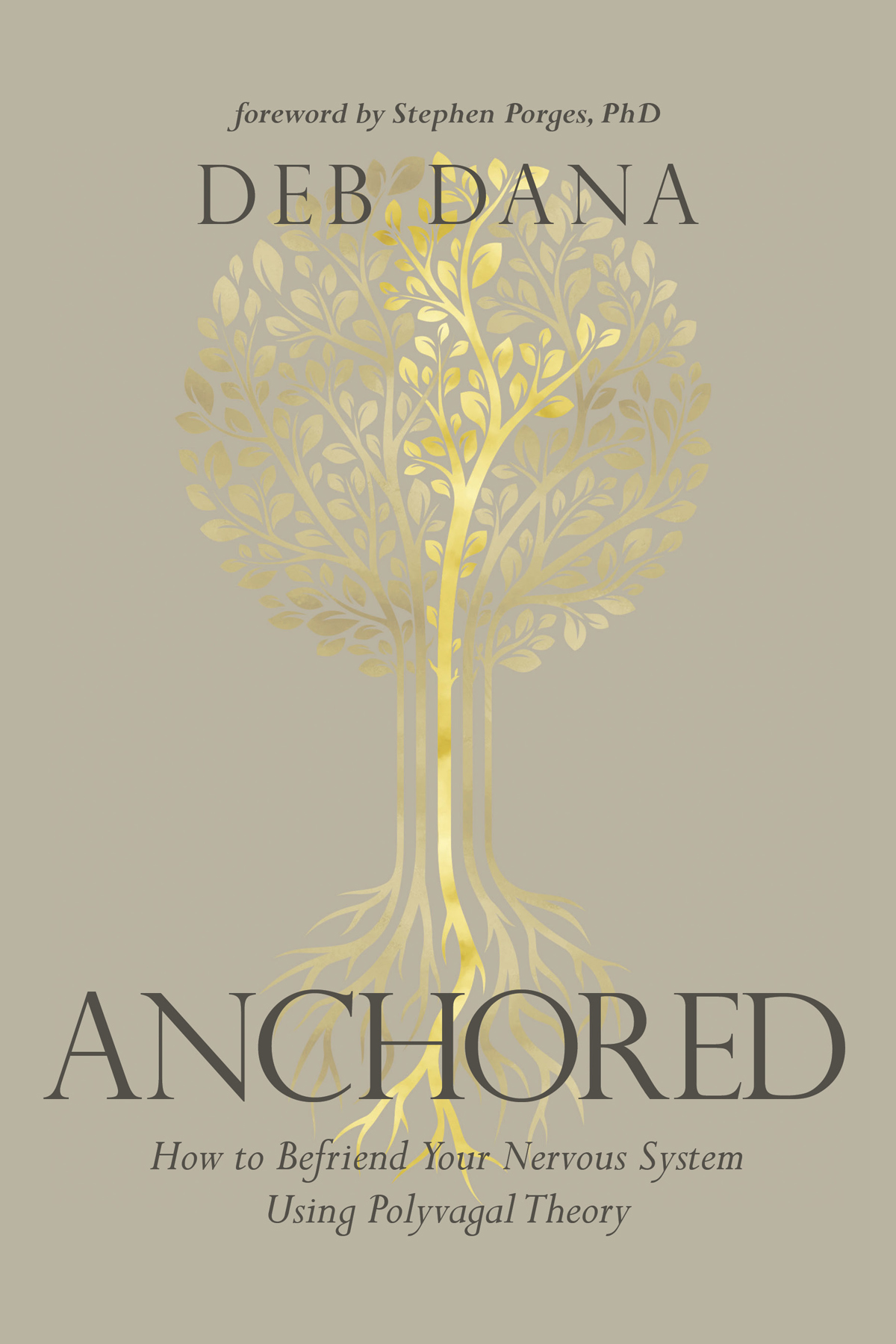

To my polyvagal family
CONTENTS
FOREWORD
by Stephen W. Porges, PhD
A s I read Anchored, I recognized that Deb Dana has made an important contribution by providing a powerful metaphor to illustrate how the nervous system regulates its resources to provide a neural platform for social behavior and gain the benefits of co-regulation. In Anchored, Deb shares her intellectual and insightful gifts by translating the complex neurophysiological constructs embedded in Polyvagal Theory into accessible language. As she links words to visualizations and visualization to bodily feelings, her gifts go well beyond linguistic skills and effectively bring bodily feelings into awareness. Through this strategy, Deb teaches the reader of Anchored the skills to move safely back into their body.
From a polyvagal perspective, Deb artfully and efficiently leads readers through structured neural exercises that effectively enable their nervous systems to more efficiently support homeostatic functions, leading to health, growth, and restoration. Or, more succinctly stated, she outlines neural exercises that will provide resources to downregulate threats and enable spontaneous social engagement, which in combination create a fluid path toward co-regulation and embodiment. The product of this strategy is a more resilient nervous system that supports both mental and physical health.
In reading Anchored, I became focused on the parallel between the communication strategies within the body and among individuals. These are interdependent levels of co-regulation, since a regulated and resourced nervous system spontaneously downregulates defensive reactions, while a nervous system in chronic states of threat downregulates opportunities to socially engage. Fortunately, through our evolutionary history, we as social mammals have developed a portal to downregulate our threat reactions through the neuroception of safety. However, access to this portal is greatly influenced by the neural state of the individual. If the autonomic nervous system is well resourced, we are resilient and there is a low threshold to trigger states of safety that would lead to spontaneous social engagement and co-regulation. Alternately, if we are locked into a defensive state, feelings of safety may not be easily accessible.
The title Anchored serves as a metaphor that Deb brilliantly uses to create the visualization of a safe place within the individuals concept of their personal resources (e.g., nervous system, concept of self). This serves them on their personal journey of embodiment with the attributes of resilience, self-regulation within, and co-regulation with others.
Functionally, the journey requires us to, first, become aware of the neurophysiological circuits involved in feelings of safety, danger, and life threat; second, become aware of the power of neuroception, the detection of cues of threat and safety without conscious awareness; and third, through visualizations and experientials, become of aware of the shifts in autonomic state. As a package, this sequence can be conceptualized as neural exercises, which would promote greater self-awareness and self-regulation, leading to greater resilience.
In a recent paper, I framed the Polyvagal Theory as a scientific extrapolation of the phylogenetic journey toward sociality functionally expressed in social mammals, which evolved from asocial reptiles. Through this journey, the neurophysiological portal to sociality required an efficient mechanism to detect safety and to reflexively downregulate defense. Basically, the neural mechanisms underlying sociality enable the rapid transition from aggressive or submissive threat reactions to a physiology that enables accessibility and promotes opportunities to co-regulate. As a scientist and the creator of the Polyvagal Theory, my narrative describing and justifying the theory continues to evolve. Although the world of trauma therapy rapidly grasped the importance of the theory as it related to the experiences of their clients, I was slower in grasping the significance of the theory in the treatment of trauma and other mental healthrelated disorders. I had to learn from therapists and their clients, who informed me of the value of the theory both in clinical practice and in transforming the personal narrative of trauma survivors.
Deb Dana is one of these insightful and articulate therapists who has informed me about the role Polyvagal Theory can play both in the clinical process and in everyday social interactions. Deb rapidly embraced the theory and, through her unique insights and communication skills, made the theory more accessible not only to therapists but as a map to understanding our personal roles in our daily social interactions. Deb expressed in her work that it is the bodily feelings and not the events that are central to the experience of trauma. Her work focuses on the central theme through which Polyvagal Informed Therapies function.
Polyvagal Informed Therapies shift the focus of therapy from the traumatic event to the bodily feeling. This is an important theoretical transformation about how trauma is both treated and embedded in the survivors nervous system. On the foundational level, Polyvagal Theory emphasizes that physiological state forms the intervening variable that determines our reactivity to cues and contexts. Thus, the theory emphasizes that it is not trauma as an event that is the primary determinant of outcome. Rather, the theory emphasizes that it is the re-tuning of the neural regulation of the autonomic nervous system to support threat reactions that is the primary determinant of outcome. This does not preclude the importance of the traumatic event but acknowledges the great individual differences in outcomes to common traumatic experiences. The Polyvagal perspective of trauma differs from the focus of epidemiological research, which emphasizes scales such as the Adverse Childhood Experiences (ACEs) and the identification of specific events as causal in the conceptualization of PTSD. This strategy redefines the trauma and moves it from being within the individual to an external event.
Prevalent contemporary epidemiological models assume that the relevant events can be quantitatively evaluated along a continuum of severity of trauma, stress, or abuse. However, Polyvagal Theory shifts the dialogue from the external event to the intervening neural system that can be vulnerable or resilient to threat. If the individual is in a vulnerable state, then lower intensity events can disrupt neural function and shift the nervous system from a state supporting homeostasis to a vulnerable state reflecting autonomic destabilization with consequential comorbidities. If the system is resilient, it can functionally buffer the impact of higher intensity events. The theory suggests that a profound retuning of the autonomic nervous system following the traumatic event is an adaptive consequence of surviving trauma.
To tap in to this intervening variable in survey research, we created the Body Perception Questionnaire (BPQ). The BPQ is a relatively short questionnaire that evaluates the reactivity of our autonomic nervous system. The psychometrics are well established, and several studies have been published using the scale. (The scale and scoring information are available on my webpage, stephenporges.com.) In my colleagues and my research, we documented the profound role of autonomic regulation as an intervening variable mediating the impact of adversity history. We found that if adults with an adversity history also had an autonomic nervous system tuned to be threat reactive, their outcomes were worse. This was confirmed by two recently published studies: one investigating sexual function and the other exploring mental health reactions during the pandemic.




